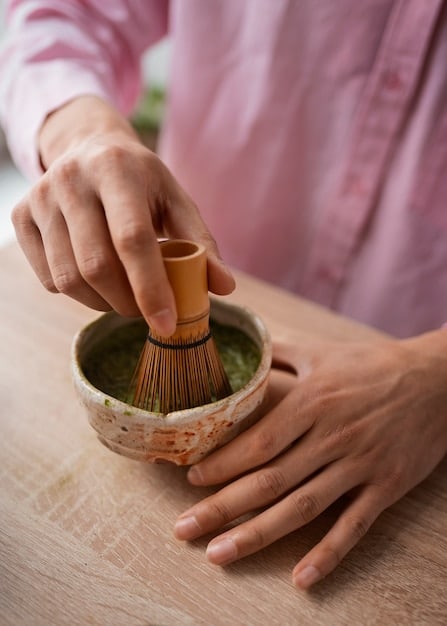The 5 Biggest J-Drama Streaming Mistakes US Viewers Make

American viewers often miss the nuances of J-dramas, leading to misunderstandings and a less enjoyable experience; avoiding common pitfalls like skipping cultural context and relying solely on surface-level plots can enhance your viewing pleasure.
Many US viewers dive into the world of Japanese dramas (J-dramas) with enthusiasm, but sometimes, cultural differences and unfamiliar viewing habits can lead to a less-than-ideal streaming experience. Let’s explore the 5 biggest mistakes US viewers make when streaming J-Dramas (and how to avoid them).
Mistake #1: Ignoring Cultural Context
One of the most significant errors is overlooking the cultural context embedded within J-dramas. These shows are deeply rooted in Japanese customs, social norms, and historical backgrounds. Without understanding this context, viewers may misinterpret actions, dialogues, and relationships.
Why Cultural Context Matters
Japanese culture emphasizes indirect communication, politeness, and hierarchical relationships. These elements are often reflected in J-dramas, where subtle gestures and unspoken words carry significant meaning. Ignoring these cultural cues can lead to a superficial understanding of the story and characters.
Examples of Cultural Nuances
For example, the use of honorific language (like “-san,” “-sama,” and “-kun”) indicates the level of respect and social standing between characters. Similarly, certain rituals and traditions, such as tea ceremonies or seasonal festivals, are integral parts of the narrative. Understanding these nuances enriches the viewing experience and prevents misinterpretations.
- Familiarize yourself with basic Japanese etiquette and social customs.
- Read online resources or watch supplementary videos explaining cultural references in J-dramas.
- Join online communities or forums to discuss cultural aspects and gain insights from other viewers.
By being mindful of the cultural backdrop, US viewers can appreciate the depth and complexity of J-dramas, unlocking a richer and more rewarding viewing experience.

Mistake #2: Expecting Western-Style Storytelling
Another common mistake is expecting J-dramas to follow the same storytelling conventions as Western television shows. J-dramas often employ slower pacing, character-driven narratives, and nuanced emotional expressions, which can differ significantly from the plot-driven, fast-paced style of many American series.
Pacing and Narrative Structure
In J-dramas, character development and emotional depth often take precedence over dramatic plot twists. Stories unfold gradually, allowing viewers to connect with the characters and understand their motivations. This slower pacing can be off-putting for viewers accustomed to quicker resolutions and constant action.
Emotional Expression and Subtlety
Furthermore, J-dramas often rely on subtle emotional cues and non-verbal communication to convey feelings. Characters may express sadness or joy through understated gestures, facial expressions, or symbolic actions. This subtlety can be missed by viewers who are used to more overt displays of emotion.
- Be patient with the pacing and allow the story to unfold gradually.
- Pay attention to non-verbal cues and subtle emotional expressions.
- Adjust your expectations and appreciate the unique storytelling style of J-dramas.
Adjusting expectations and embracing the distinct storytelling style of J-dramas enables viewers to fully immerse themselves in the narrative and appreciate the emotional depth and character-driven plots.
Mistake #3: Relying Solely on Dubs and Ignoring Subtitles
While dubs can be convenient, relying solely on them often leads to a diluted or inaccurate representation of the original material. Subtitles, on the other hand, provide a more direct translation of the dialogue, preserving the nuances and intentions of the original script.
The Limitations of Dubbing
Dubbing involves re-recording the dialogue in another language, which can result in discrepancies in tone, inflection, and meaning. Additionally, dubbing often fails to capture the cultural context and linguistic subtleties of the original Japanese dialogue.
The Advantages of Subtitles
Subtitles offer a more authentic viewing experience by providing a direct translation of the original script. They allow viewers to hear the actors’ actual voices, preserving the emotional nuances and cultural context of the performance. Moreover, subtitles can help viewers learn Japanese and improve their language skills.
- Prioritize subtitles over dubs to experience the original performance and cultural context.
- Use dubs as a supplementary tool for understanding complex dialogue.
- Consider using subtitles to improve your Japanese language skills.
Opting for subtitles over dubs ensures a more authentic and enriching viewing experience, preserving the integrity of the original J-drama and enhancing comprehension of its cultural nuances.

Mistake #4: Overlooking Genre Conventions
J-dramas span a wide range of genres, each with its own conventions and tropes. Overlooking these genre conventions can lead to confusion and disappointment. Understanding the typical elements of each genre enhances the viewing experience and allows viewers to appreciate the unique characteristics of each show.
Popular J-Drama Genres
Some popular J-drama genres include romance, comedy, suspense, historical dramas (jidaigeki), and school dramas. Each genre has its own set of expectations and narrative patterns. For example, romance dramas often feature predictable plotlines and over-the-top emotional expressions, while suspense dramas focus on mystery, intrigue, and unexpected twists.
Adapting to Genre-Specific Tropes
By familiarizing themselves with the conventions of each genre, viewers can better anticipate the plot developments and appreciate the unique elements of each show. This knowledge can also help viewers choose J-dramas that align with their personal preferences and viewing tastes.
- Research popular J-drama genres and their conventions.
- Watch a variety of J-dramas from different genres to broaden your viewing experience.
- Use online resources and forums to learn about genre-specific tropes and expectations.
Recognizing and understanding genre conventions enables viewers to approach J-dramas with informed expectations, enhancing their ability to appreciate the unique narrative and thematic elements of each genre.
Mistake #5: Neglecting to Research Production Quality and Availability
Not all J-dramas are created equal. Production quality varies significantly, and some older or less popular shows may have limited availability or low-quality streaming options. Neglecting to research these factors can lead to a frustrating viewing experience.
Assessing Production Values
Production quality encompasses various aspects, including cinematography, sound design, acting, and special effects. High-quality productions often feature polished visuals, crisp audio, and compelling performances. Conversely, lower-quality productions may suffer from poor lighting, muffled sound, and amateurish acting.
Finding Reliable Streaming Sources
Access to J-dramas varies depending on the region and streaming platform. Some shows may be available on popular streaming services like Netflix or Crunchyroll, while others may require specialized subscription services or less-than-legal sources. Researching availability and choosing reliable streaming options ensures a smooth and enjoyable viewing experience.
- Read reviews and ratings to assess the production quality of J-dramas.
- Check for legal streaming options on reputable platforms.
- Be cautious of pirated or low-quality streaming sources.
Diligent research into production quality and streaming availability optimizes the viewing experience, ensuring access to high-quality J-dramas from reliable sources.
| Key Point | Brief Description |
|---|---|
| 🇯🇵 Cultural Context | Understanding Japanese customs enriches viewing. |
| 🎬 Storytelling Style | Embrace slower pace and character focus. |
| 💬 Subtitles Over Dubs | Opt for authentic dialogue experience. |
| 🎭 Genre Conventions | Learn tropes for better enjoyment. |
Frequently Asked Questions
▼
Key cultural elements include honorific language, traditional rituals (tea ceremonies), seasonal festivals, and indirect communication styles. Familiarizing yourself with these aspects enhances viewing comprehension.
▼
Subtitles provide a direct translation, preserving the original performance and cultural context. Dubs can alter tone and meaning, diluting the authenticity of the J-drama.
▼
Popular genres include romance, comedy, suspense, historical dramas (jidaigeki), and school dramas. Each features unique tropes and narrative styles, enriching viewing options.
▼
Research production values through reviews and ratings. Opt for legal streaming on reputable platforms like Netflix or Crunchyroll, avoiding pirated sources for better experiences.
▼
J-Dramas often prioritize character development and emotional depth over fast-paced plots. This slower rhythm allows a deeper connection, demanding patience and observation from viewers.
Conclusion
By understanding and avoiding these common mistakes, US viewers can greatly enhance their enjoyment of J-dramas, gaining a deeper appreciation for Japanese culture and storytelling. Embrace the nuances, be patient, and immerse yourself in the captivating world of Japanese television!





